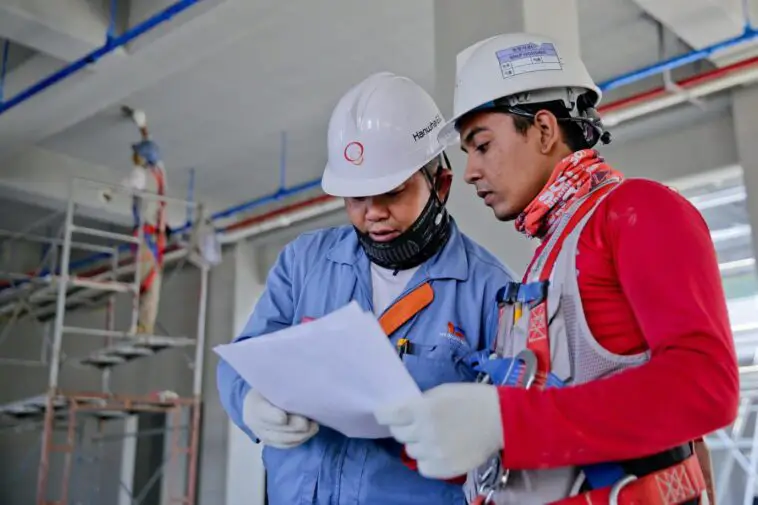If you want to keep your clients happy, completing your building projects on time is absolutely essential. Your timing has a direct impact on your budget, too, which means that your schedule has pretty high stakes.
However, we all know that challenges and obstacles are inevitable in the construction industry. This is why you need to be extremely well-prepared and geared up to work around any setbacks that might get in your way. Here are five important things to think about during your planning phase to help you ensure you can stick to your timeline.
Thorough Project Planning
First of all, starting your project with a thorough and well-thought-out plan is obvious, yet sometimes still neglected.
Create a proper task breakdown that includes everything – site prep, foundation work, structural building, interior finishes, and even final inspections. Assign timelines to each task within these major phases of the project and account for any variable factors that could influence each task. You can use project management software like Procore or Microsoft Project to help you develop Gantt charts, which will help you plan and visualise your timelines.
Effective Procurement and Logistics
Keeping up with your project’s timelines will require some very effective procurement and logistics processes. Working closely with reliable suppliers and having a solid procurement plan will help you make sure all your orders arrive on schedule.
Whether you’re ordering something as major as bridge girders for a massive project or something as small as some new hand tools, ensuring that you have everything you need on time to move ahead with your project is non-negotiable. You’ll need to make sure you keep a thorough inventory and track what materials and equipment you have by using tech like RFID tagging or barcoding services.

Contingency Planning and Flexibility
Having well-thought-out backup plans in place is crucial for any major (or not-so-major) building project. With so many intricacies to consider, planning for unanticipated events and every possible disruption will help keep you on track, even when things do go amiss.
Identify your most critical tasks and come up with backup plans that can be used instead in case of delays or other unforeseen circumstances, minimising the potential impact on your schedule. Keep an open mind about your plans, and be ready to adapt and modify at a moment’s notice when it comes to your schedule or resource allocation – sometimes, making a quick change is going to be better than putting important tasks on hold.
Clear and Concise Communication
Being able to communicate clearly and effectively with your entire team (as well as external parties) is essential.
Internally, make sure you’re making use of a good collaborative tool like Slack or a project management system that features messaging, secure document sharing, and other important communication and collaboration methods. You should also schedule regular meetings with suppliers, subcontractors, engineers, architects, and stakeholders. These regular meetups will serve as the perfect opportunity to discuss project progress, goals, and any difficulties you’ve encountered that might impact your schedule.
Continuous Monitoring and Reporting
Being up to date on exactly what’s happening with your project will often be your saving grace. Implement ongoing monitoring and regularly check reports, and thank us later.
Measuring your project against your baseline targets is a sure-fire way to quickly and easily track your progress, identify hiccups, and address any issues quickly. Use specially curated dashboards within your software to see everything at a glance and generate regular reports on your project’s progress. You can use this information to make sure you’re communicating transparently with your stakeholders and other involved parties while also taking advantage of the insights to help you make the best decisions to keep things moving forward at a steady pace.
Taking Advantage of Technology
As we’ve already mentioned, there are a few tools (like project management and collaboration tools) that you can use to help you keep your project on track.
However, you can also branch further into the realm of tech and make use of automation tools to help you streamline your workflow and improve productivity. Make sure that the software you invest in has all the features you need, including scheduling, budgeting, resource allocation, and easy communication. You can also use GPS tracking for your equipment and team members, and Building Information Modeling (BIM) software for team-based design and construction scheduling to keep everyone on the same page regarding the project as a whole.
Quality Assurance and Risk Mitigation
Throughout the entire building process, quality control needs to be a top priority if you want to avoid delays in your schedule or having to redo anything because of shortcomings on your side.
Make sure that you’re meeting (or exceeding) both client expectations and industry standards by making use of strict quality control measures, regular inspections, and rigid testing protocols. By doing regular checking, you’ll be able to resolve problems before they’re actually problems, avoid conflicts, and prevent any serious delays.
Final Thoughts
The successful management of any construction project with a tight schedule takes serious skill, planning, and intentionality.
You’ll need to make sure that you have a comprehensive strategy in place that involves thorough planning, good communication, and continual improvement if you want to be able to cope with the pressure. Remember that projects like these are always susceptible to unexpected setbacks – it’s simply your job to know how to handle them proactively in order to minimise their effect.




